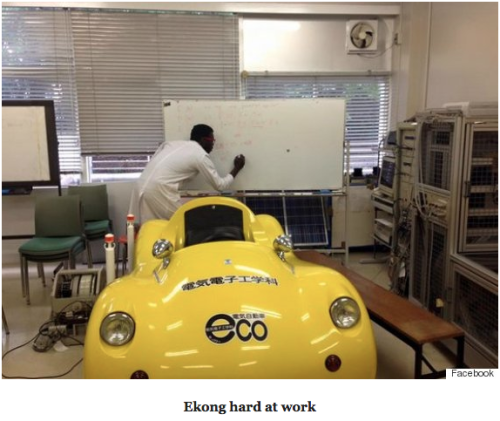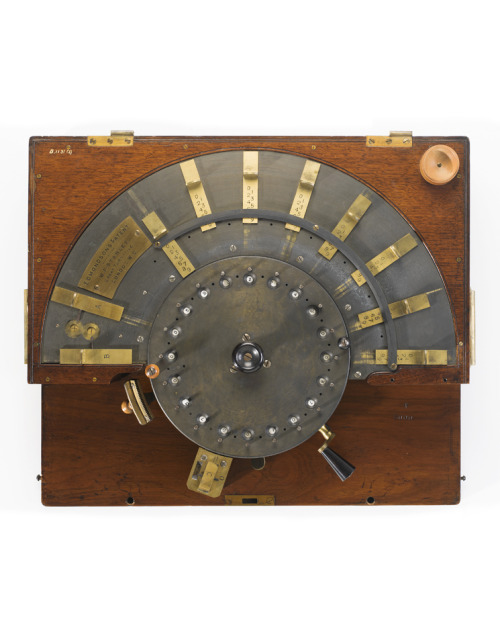This Satellite, Explorer 24, Was A 12-foot-diameter Inflatable Sphere Developed By An Engineering Team

This satellite, Explorer 24, was a 12-foot-diameter inflatable sphere developed by an engineering team at Langley. It provided information on complex solar radiation/air-density relationships in the upper atmosphere. It was launched on November 21, 1964.
More Posts from Theidlerhour and Others



A Nigerian student has achieved the highest grades at a Japanese university for the past 50 years, while solving a mathematical equation which was unsolvable 30 years ago, in his first semester.
Ufot Ekong achieved a first in electrical engineering at Tokai University in Tokyo, scoring the best marks since 1965, CCTV Africa reported.
Ekong, from Lagos, also plays the saxophone, and runs a retail wears and accessories shop in Japan called Strictly African Japan.
The Nigerian speaks English, French, Japanese and Yoruba, his country’s native language, and paid his way through university himself.
He currently works for Nissan and has already patented two products, as well as making an electric car which reaches up to 128 kmph.
During his time at university, Ekong has won six awards for academic excellence.
Source


If Earth had Saturn’s Rings
From an excellent post by Jason Davis
From Washington, D.C., the rings would only fill a portion of the sky, but appear striking nonetheless. Here, we see them at sunrise.

From Guatemala, only 14 degrees above the equator, the rings would begin to stretch across the horizon. Their reflected light would make the moon much brighter.

From Earth’s equator, Saturn’s rings would be viewed edge-on, appearing as a thin, bright line bisecting the sky.

At the March and September equinoxes, the Sun would be positioned directly over the rings, casting a dramatic shadow at the equator.

At midnight at the Tropic of Capricorn, which sits at 23 degrees south latitude, the Earth casts a shadow over the middle of the rings, while the outer portions remain lit.

via x

Joseph Edmonson, Mechanical calculator, 1889. Brass and steel mechanism. Patented in 1883, Made by W.F. Stanley, England. Exhibit interface, Powerhouse Museum, Sydney.
Mechanical calculators were first developed to reduce errors made by human calculators. This machine was used for addition and subtraction and a complex instrument to master.

These “mammatus clouds” were photographed above Hastings, Nebraska, after a destructive thunderstorm in May 2005. Although their formation is not completely understood, these rare clouds usually develop at the base of a thunderstorm, and appear lumpy because of instabilities and temperature differences between sinking and rising air.
things i like doing: math
things i hate doing: math
NASA Voyager Probe Experiences Three ‘Tsunami Waves’ in Interstellar Space

-
 wallsandsound reblogged this · 8 years ago
wallsandsound reblogged this · 8 years ago -
 cognitivelyadvancedzygote liked this · 9 years ago
cognitivelyadvancedzygote liked this · 9 years ago -
 time4watches-blog liked this · 9 years ago
time4watches-blog liked this · 9 years ago -
 wizurdly reblogged this · 9 years ago
wizurdly reblogged this · 9 years ago -
 wizurdly liked this · 9 years ago
wizurdly liked this · 9 years ago -
 bubblehat reblogged this · 9 years ago
bubblehat reblogged this · 9 years ago -
 starsaremymuse reblogged this · 9 years ago
starsaremymuse reblogged this · 9 years ago -
 theunamedgod liked this · 9 years ago
theunamedgod liked this · 9 years ago -
 greybeard55 reblogged this · 9 years ago
greybeard55 reblogged this · 9 years ago -
 joereifer reblogged this · 9 years ago
joereifer reblogged this · 9 years ago -
 greybeard55 liked this · 9 years ago
greybeard55 liked this · 9 years ago -
 fillioxalyn liked this · 9 years ago
fillioxalyn liked this · 9 years ago -
 kgzgr-eacolfr liked this · 9 years ago
kgzgr-eacolfr liked this · 9 years ago -
 frognetp-blog liked this · 9 years ago
frognetp-blog liked this · 9 years ago -
 nmtkmrnke liked this · 9 years ago
nmtkmrnke liked this · 9 years ago -
 wintercoffin liked this · 9 years ago
wintercoffin liked this · 9 years ago -
 thevaultoftheatomicspaceage reblogged this · 9 years ago
thevaultoftheatomicspaceage reblogged this · 9 years ago -
 thevaultoftheatomicspaceage liked this · 9 years ago
thevaultoftheatomicspaceage liked this · 9 years ago -
 starkiller1701-a reblogged this · 9 years ago
starkiller1701-a reblogged this · 9 years ago -
 thegreyuniverse reblogged this · 9 years ago
thegreyuniverse reblogged this · 9 years ago -
 karmamonkey64 liked this · 9 years ago
karmamonkey64 liked this · 9 years ago -
 itstherandomloller liked this · 9 years ago
itstherandomloller liked this · 9 years ago -
 empathyisnice reblogged this · 9 years ago
empathyisnice reblogged this · 9 years ago -
 vitruvian-machine-blog reblogged this · 9 years ago
vitruvian-machine-blog reblogged this · 9 years ago -
 smithsmythesmith reblogged this · 9 years ago
smithsmythesmith reblogged this · 9 years ago -
 ventolinmono liked this · 9 years ago
ventolinmono liked this · 9 years ago -
 jacquelinesantiago liked this · 9 years ago
jacquelinesantiago liked this · 9 years ago -
 rozzantmacska reblogged this · 9 years ago
rozzantmacska reblogged this · 9 years ago -
 rozzantmacska liked this · 9 years ago
rozzantmacska liked this · 9 years ago -
 drhoz liked this · 9 years ago
drhoz liked this · 9 years ago -
 eggstronomy liked this · 9 years ago
eggstronomy liked this · 9 years ago -
 gypseywanderer reblogged this · 9 years ago
gypseywanderer reblogged this · 9 years ago -
 gypseywanderer liked this · 9 years ago
gypseywanderer liked this · 9 years ago -
 spacetimewithstuartgary reblogged this · 9 years ago
spacetimewithstuartgary reblogged this · 9 years ago -
 tictokklock-blog reblogged this · 9 years ago
tictokklock-blog reblogged this · 9 years ago
"To awaken my spirit through hard work and dedicate my life to knowledge... What do you seek?"
229 posts
